Words Gabrielle de la Cruz
Images Patrick Kasingsing
“An important thing to note is that this is not an exhibit of the Design Center of the Philippines (DCP). This is an exhibit of Philippine design,” underlines exhibit curator Marian Pastor Roces during the media walkthrough of the “50 Years of Philippine Design and Beyond” exhibit. While the event marks DCP’s 50th founding anniversary, the exhibit goes beyond by providing the public a visual timeline of local creativity milestones from the 1970s, and how all these “redirected the relationship between creativity and commerce” in the country and beyond, according to Roces.

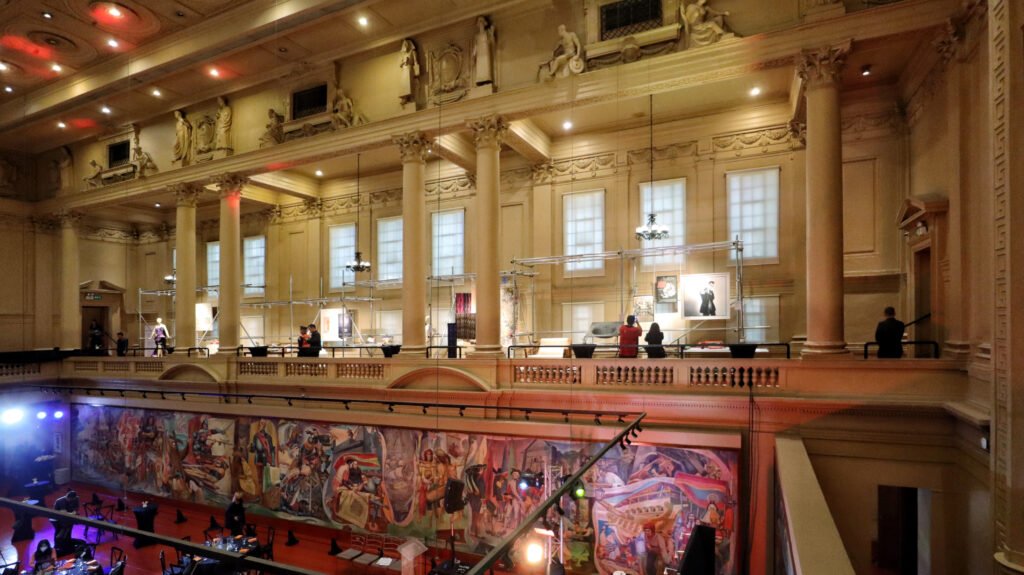
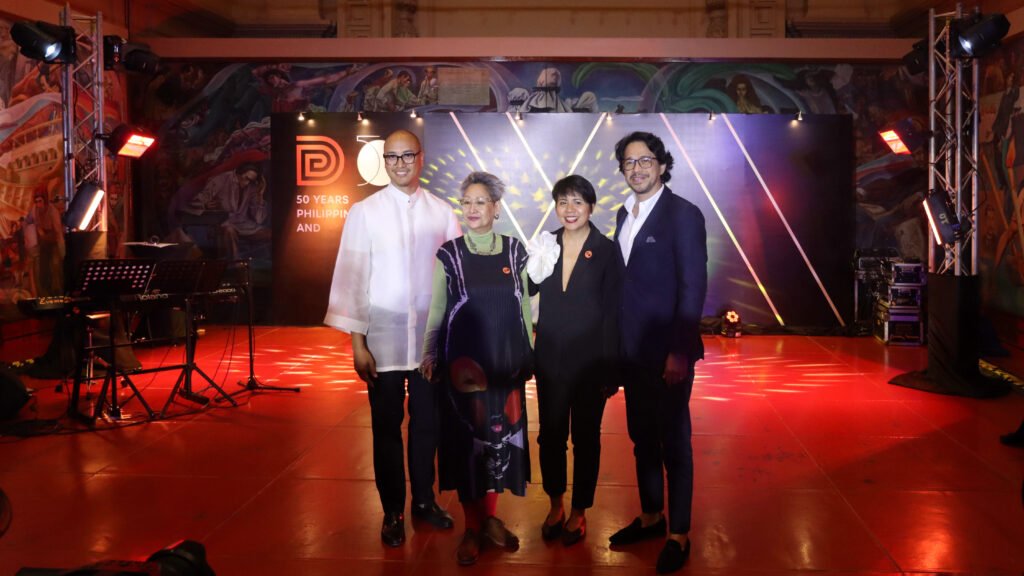
Staged inside the National Museum of Fine Arts, the exhibit gathers a sizable collection of designed objects (including 50 art chairs), ordered by year of release and repute, and situated across three spaces: the 4F Mezzanine, Galleries 25, and 26. A white guide line on the museum floor links the three areas together. According to Roces, the idea is “not to give ourselves a pat on the back,” but to look back on what was done to prepare ourselves “for the challenges of tomorrow.” During the press briefing, she also emphasized how the journey of Philippine design can be likened to a musical motif called “Ostinato,” a short melodic phrase that is repeated in a musical composition. “Over the last 50 years, we have seen Philippine design return to the use of indigenous materials, along with a shared responsibility to showcase our collective identity. We hope that people will be able to realize that as they look at the display of pieces we gathered for this exhibit.”
Select pieces were borrowed from designers and private collectors, while others form part of the Design Center Philippines’ archival collection. The project was led by interior designer Carla Leonor, with the exhibition layout done in collaboration with Architect Royal Pineda of Royal Pineda+.
Among the curated pieces in the exhibit are the Duyan chair by Lor Calma, a series of contact prints from the 1970s, a book documenting the works of National Artist for Architecture Leandro Locsin, a poster from Mike de Leon’s iconic movie, “ITIM,” and a portrait of Filipino rock icon Joey “Pepe” Smith of the Juan de la Cruz band.
The exhibit begins with the “50 Year Retrospective” segment, at the 4F Mezzanine, continuing on to Gallery 26. It is a showcase of how Philippine design picked up momentum from the 1970s to the year 2000, when “Filipino designers defined their field as self-aware of its difference from art.” This is marked by developments in various creative fields such as graphic design and print, film, furniture, and fashion. Objects in this chapter include the works of Filipina fashion icon Salvacion Lim Higgins, some of National Artist Francisco “Bobby” Mañosa’s first toy creations, a Maria Cafra vinyl record, and Ikat dyed textiles by Narda Capuyan.
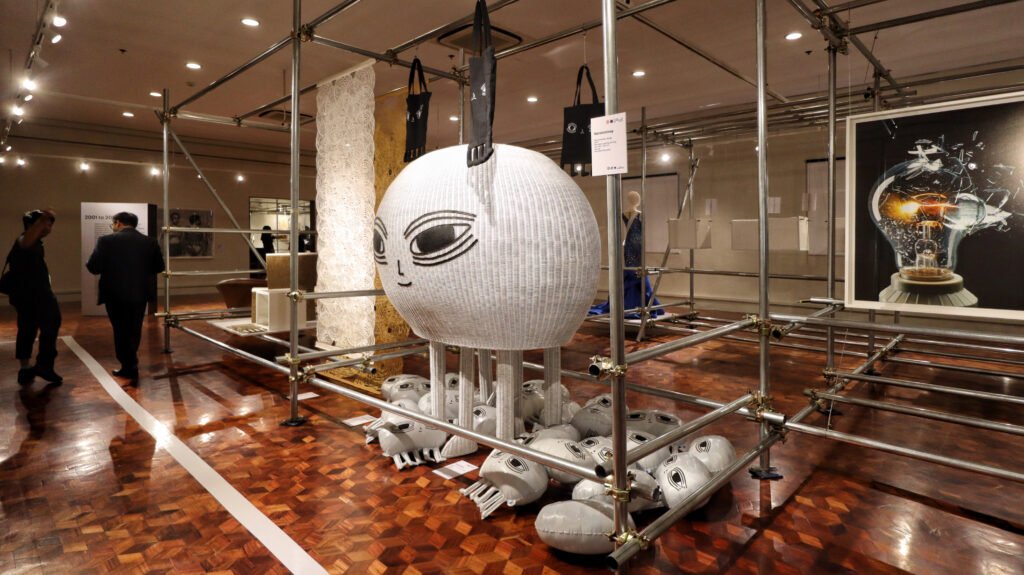
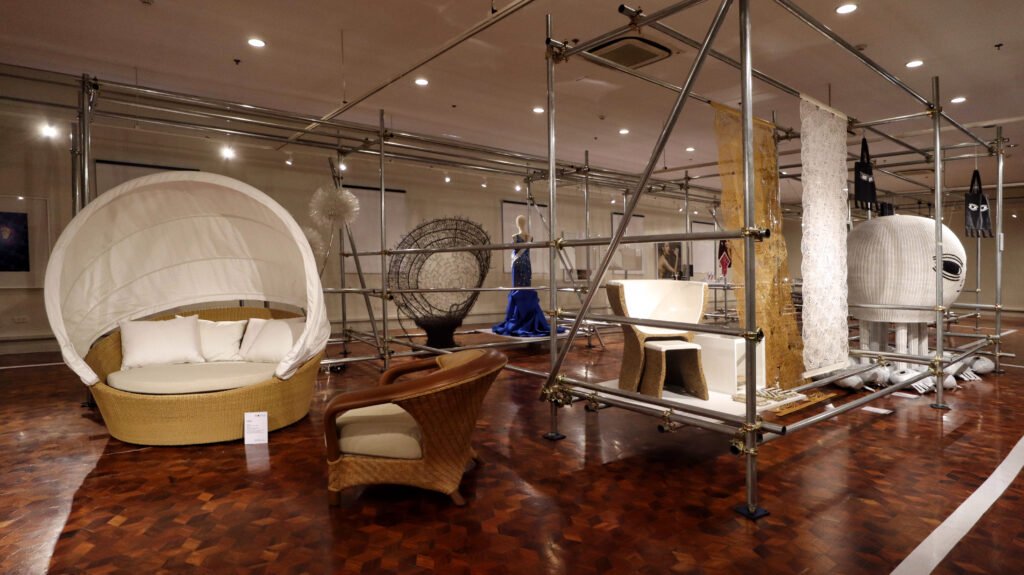
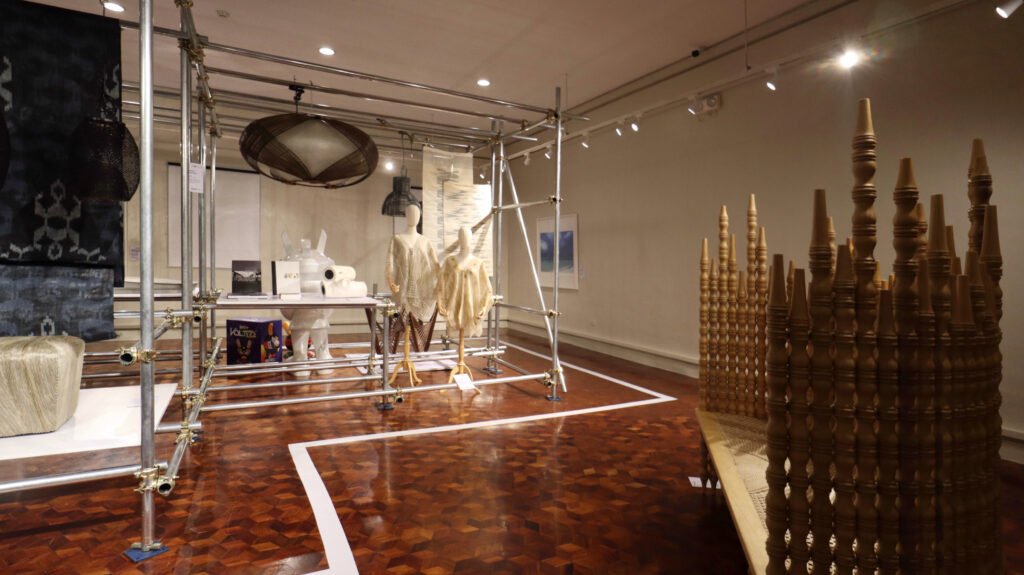
Following this journey is a series of modern design innovations from 2001 to the present at Gallery 26. “I’m not going to explain most of these pieces anymore. You are pretty much aware of them as they belong to your generation,” Roces jested to the predominantly young media crowd. Dex Fernandez’s “Garapata”, Ito Kish’s award-winning ‘Gregoria’ chair, the ubiquitous aviator-wearing Rizal graphic of Team Manila, Miss Universe Pia Wurtzbach’s iconic blue gown, and modern pieces from master jeweler Hans Brumann are some of the design attractions that await in the gallery. Towards the end of the visual timeline are portraits showcasing traditional tattoo art or “pambabatok,” with Roces noting that this is symbolic of the “embodiment of the indigenous identity,” once again returning to the “Ostinato” concept she explained earlier.
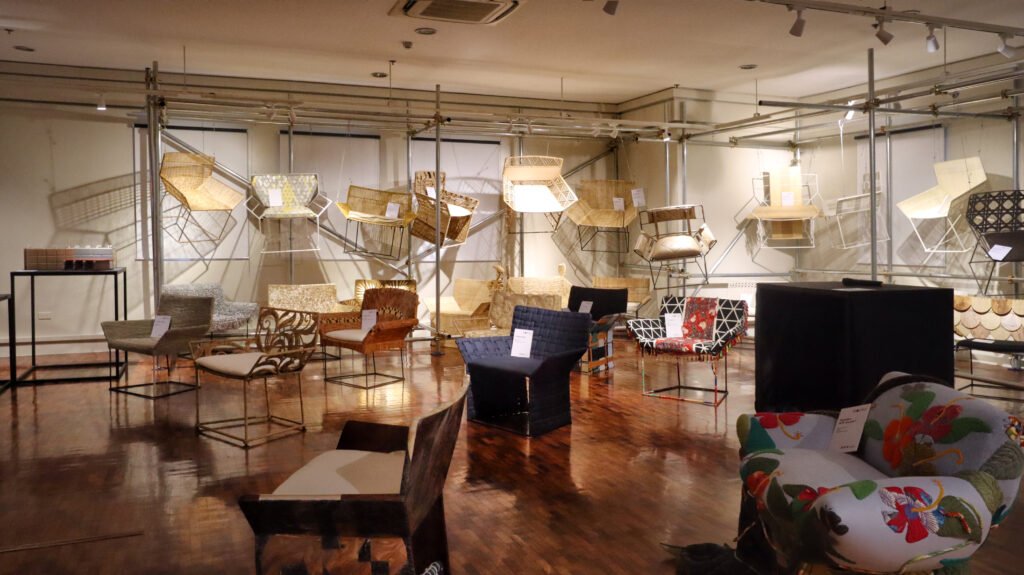
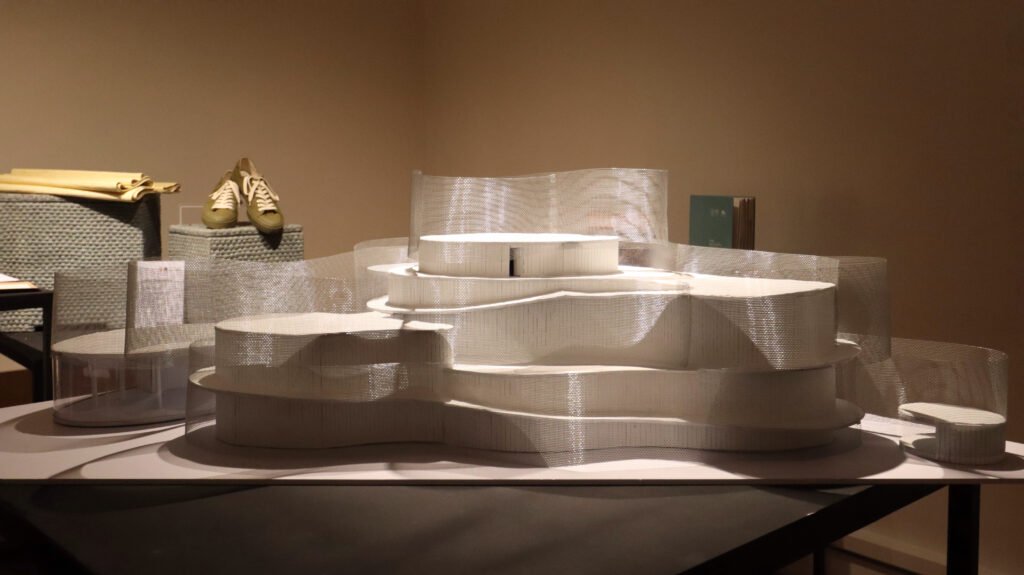
The exhibit’s final segment, “The Future Today” at Gallery 26 is an intimate space that holds 50 reimagined versions of National Artist Arturo Luz’s “New Buri Chair.” Each chair was crafted by a different designer using their own materials and special techniques, showcasing the aspirations of Filipino talents and the transcendent possibilities of Philippine design. A scale model of the Bangkota pavilion for the Dubai Expo by Royal Pineda+ and the design applications of D&AD Wood Pencil winning treeless paper Pinyapel, are reflective of the shared optimism for a more sustainable future in Philippine design. The exhibit comes to a close with the short film “Our Gift to the World,” first shown at the Dubai Expo, with choreography by Denisa Reyes and direction from BBDO Guerrero, which “visualizes the Filipino’s genius at social and aesthetic interconnectivity.”
“What keeps you hopeful for the future of Philippine design?” we asked the exhibit organizers during the question-and-answer portion.
Exhibit designer Royal Pineda says that “designers are organically positive,” as nobody would design something that is designed to fail. “We all want to design something that works, and if we continue to share this vision then we can better the path that we are in.”
National Museum deputy director Jorell Legaspi agrees, adding that Filipinos are positive and naturally creative. “Recent events such as the COVID-19 pandemic have challenged Filipino designers and Filipinos in general, but we have seen and continue to see how people turn to their talents during these times and how these have led to collaborations and other projects.” He says that we must continue to develop this “creative language” not just by simply educating, but by finding ways to emotionally connect with people so that this language can resonate with everyone.
Exhibit curator Marian Pastor Roces, on the other hand, underscores that we must recognize where that hope lies: ”Designers already know that certain things are unquestionable. For example, we all know that fashion creates waste. Because we already know this, there is room for optimism.” She also highlighted the importance of a circular economy, a “model of production and consumption, which involves sharing, leasing, reusing, repairing, refurbishing and recycling existing materials and products as long as possible.” Roces says that designers must be aware of this and should take part in it so that the design industry can create a circularity where sources of labor and ideas are shared and involved in the entire design process.
Finally, DCP executive director Rhea Matute shares that the Design Center Philippines has recently marked “malasakit” or compassion as one of the pillars of good design. With this, they pose the question: What global challenge does your design solution try to solve? This move is accompanied by discussions with designers in achieving the United Nations’ 17 Sustainable Development Goals.
“This is not being talked about much, but an innovation space through conversation and collaborations is happening. We are addressing complex problems, and people are starting to be part of the conversation, not just locally, but Filipino designers are also being asked globally. That makes us very confident, and hopefully a lot more would join us.” •
Design Center of the Philippines’ “50 Years of Philippine Design and Beyond” will be open to the public starting December 12, 2023, and will be on display at the National Museum of Fine Arts until March 3, 2024.

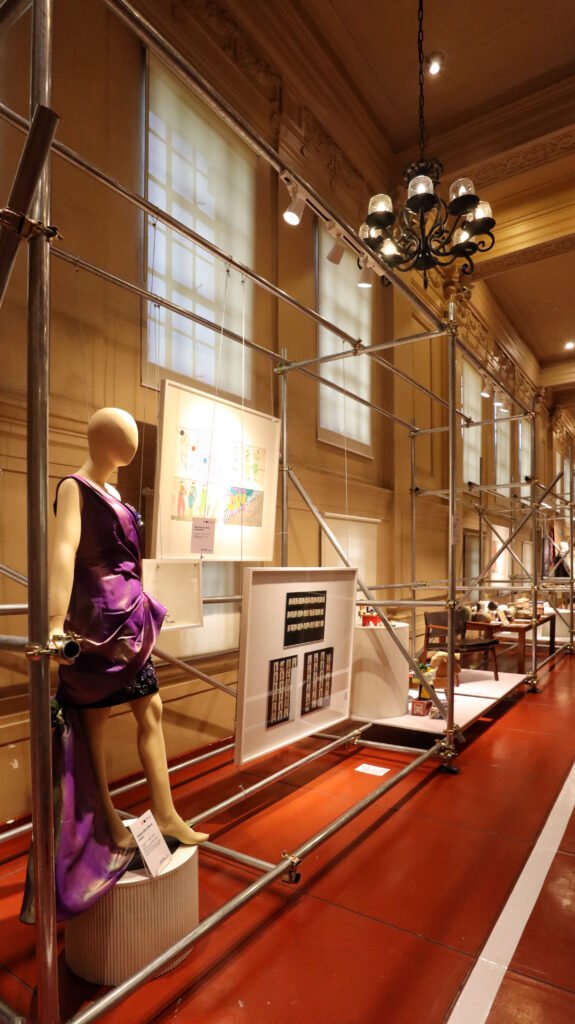
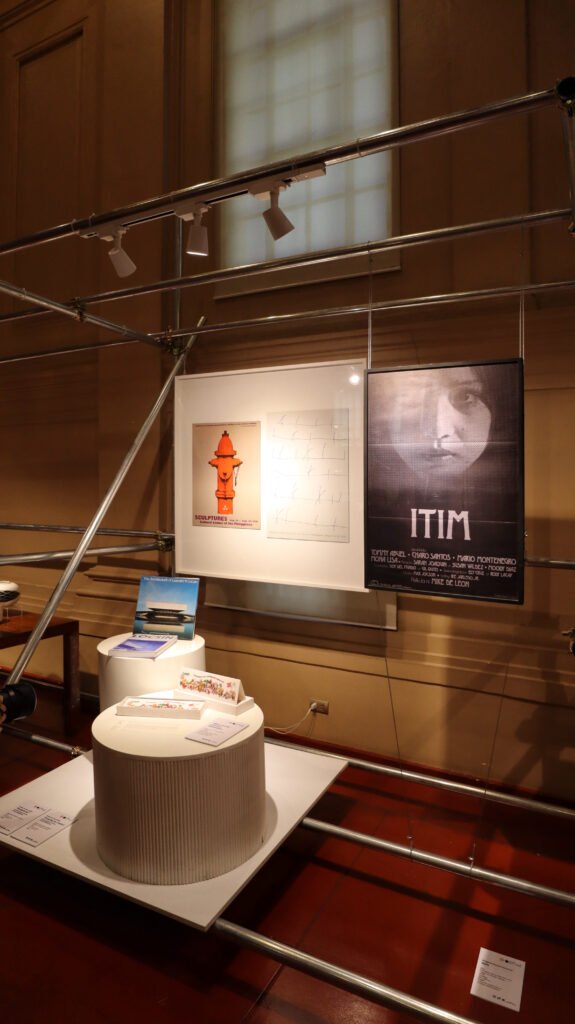
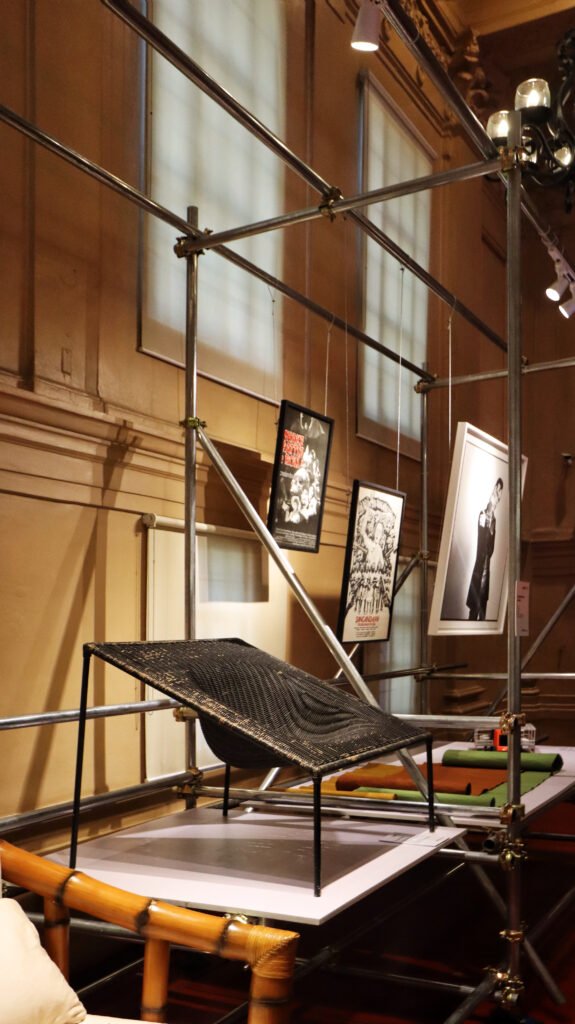
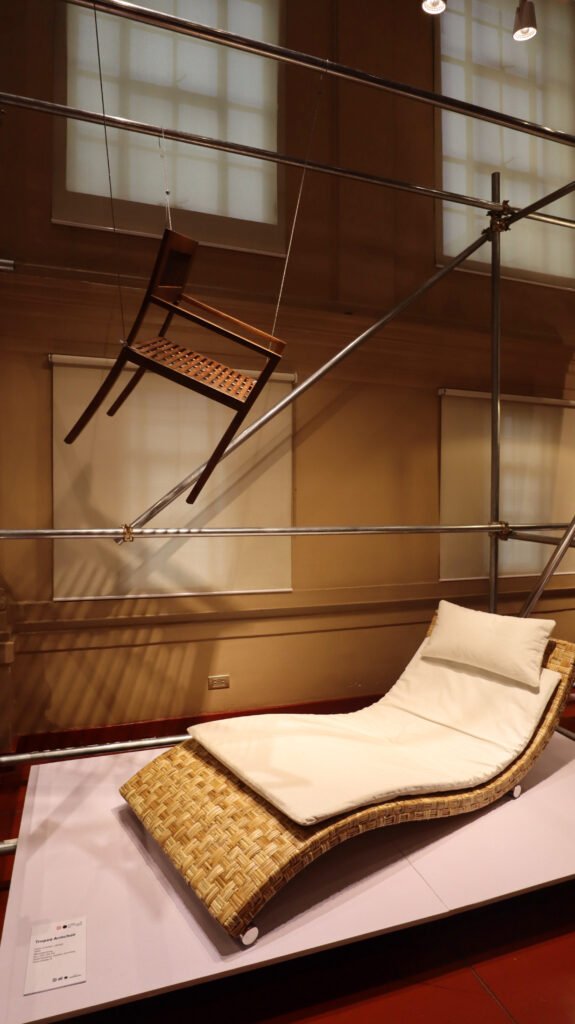
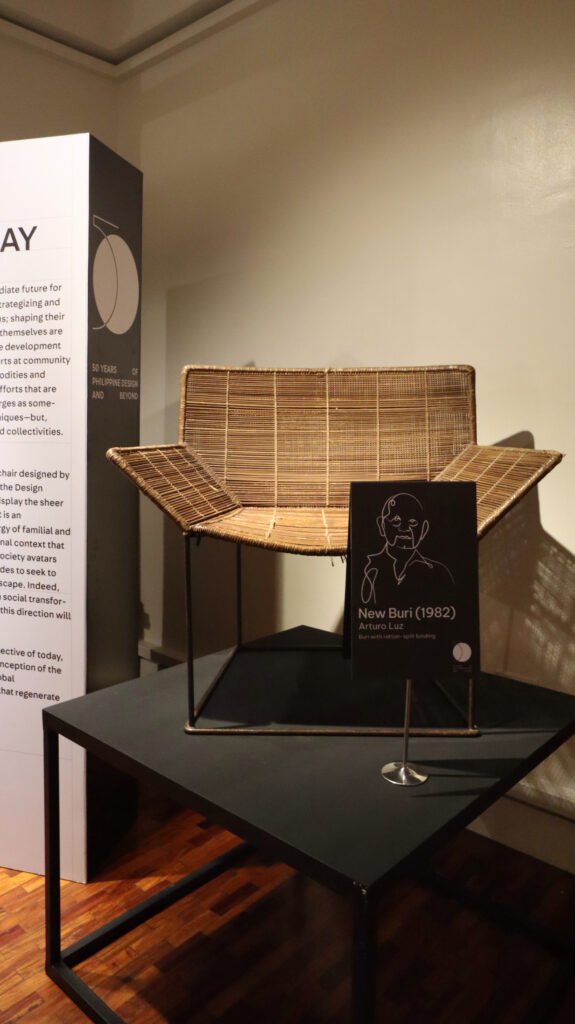

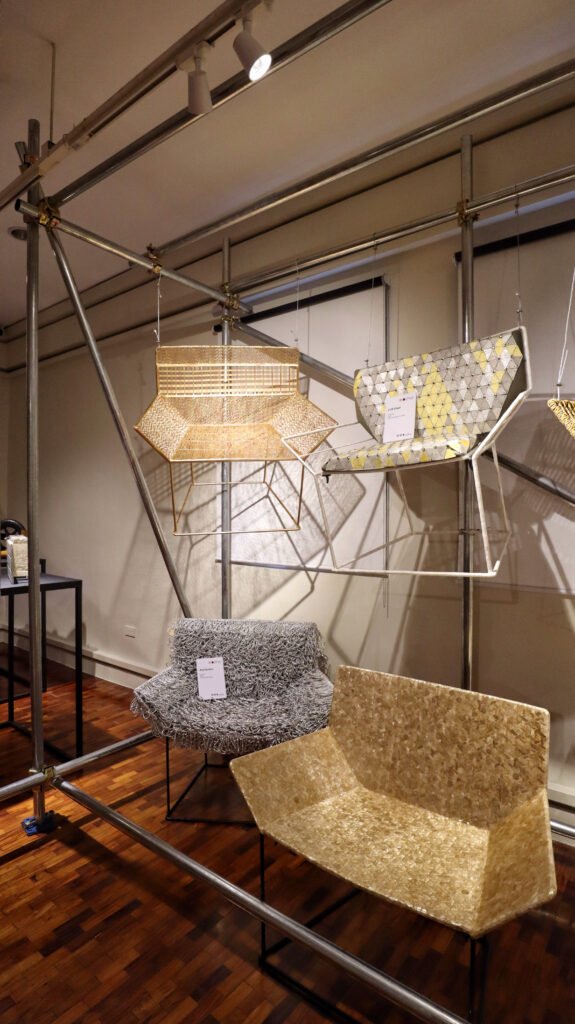
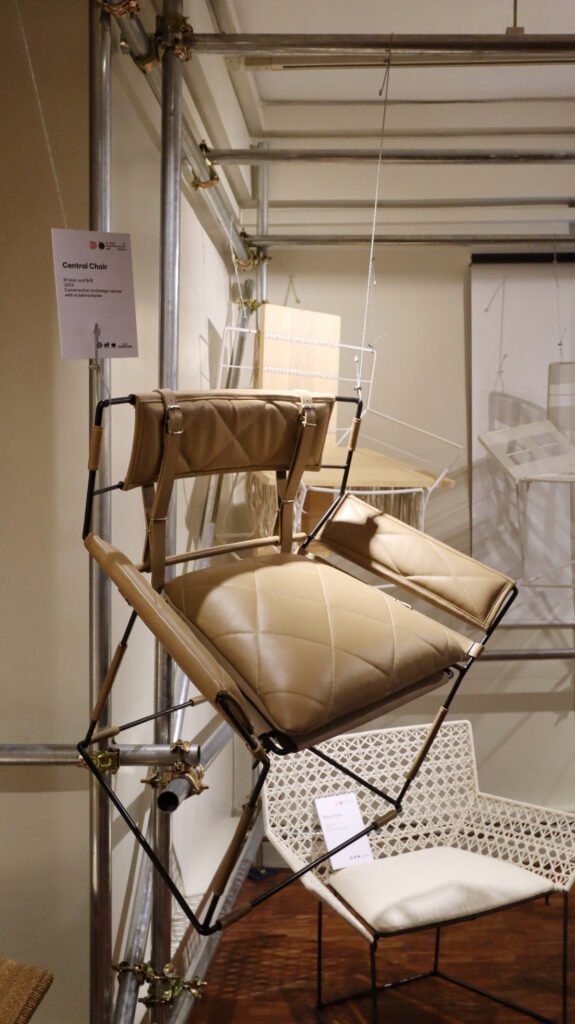

2 Responses
Magnificent! Very timely!